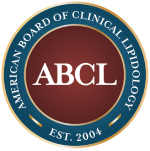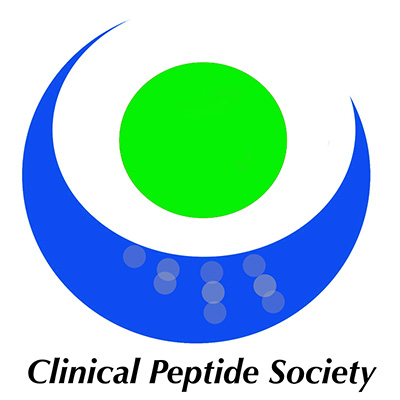Exploring Your Options: Effective Low Testosterone Treatments Explained

Low testosterone treatment addresses a hormonal imbalance affecting various well-being aspects, such as energy, mood, and muscle maintenance. Though this condition tends to appear more frequently with age, it also occurs in younger individuals due to stress, lifestyle factors, or underlying health concerns. Identifying the most effective approach for you requires careful consideration of medical evaluations, personal preferences, and professional guidance.
Recognizing the signs and diagnostic process
When testosterone levels decrease, it is common to experience fatigue, reduced sex drive, and lower muscle mass. Some people notice changes in mood or concentration, which may affect everyday productivity. Wellness practitioners often suggest a blood test that measures hormone levels to confirm low testosterone levels. This test can identify borderline or significantly decreased testosterone, guiding further decisions regarding low testosterone treatment.
A thorough consultation with a wellness center usually involves evaluating the patient's overall health, lifestyle habits, and medical history. The process may involve screenings for other potential causes, such as thyroid imbalances or chronic illnesses. By ruling out additional concerns, it becomes possible to target testosterone-related issues more directly.
Effective low testosterone treatments
There are quite a few low testosterone treatments a wellness practitioner will consider, all depending on each patient's medical and lifestyle profile.
Hormone replacement therapy
Wellness practitioners typically consider hormone replacement therapy (HRT) as the primary low testosterone treatment option. It involves supplementing the hormone through injections, patches, gels, or pellets placed under the skin. These methods vary in dosage and frequency, but they all aim to restore testosterone to a functional range without causing excessive fluctuations.
Intramuscular injection delivers a concentrated dose of testosterone at intervals suggested by a physician. Some patients may receive weekly injections, while others follow a biweekly schedule until desirable results are achieved. Patches and gels, on the other hand, deliver testosterone through the skin and require patients to apply the substance daily. This consistent delivery method helps avoid abrupt spikes in hormone concentration, promoting a more balanced effect.
Lastly, testosterone pellets are implants beneath the skin, usually in the hip or buttock region, through a minimally invasive procedure in the office. These pellets release testosterone over several months, eliminating the need for frequent applications or injections. Often, this HRT option appeals to those who prefer minimal maintenance.
Lifestyle modifications
Low testosterone treatment also includes lifestyle changes. Improving diet, enhancing sleep quality, and increasing physical activity all support healthy hormone levels. Nutrient-rich foods containing protein, healthy fats, and essential vitamins contribute to hormone regulation. A balanced meal plan with lean meats, fish, fruits, and vegetables provides the nutrients necessary for proper endocrine function.
Further, according to Healthline, prioritizing consistent, restful sleep is essential for hormone production and regulation. Aim for a schedule that allows seven to eight hours of uninterrupted rest each night. Exercise routines focused on resistance training and cardiovascular activity can encourage the body to produce testosterone more efficiently. According to an article published in SpringerLink, a sports medicine journal, weights and other strength-based exercises promote muscle development, positively influencing hormone balance.
Supplements and alternative therapies
Some individuals explore natural options alongside or in place of traditional low testosterone treatment. Supplements such as vitamin D, zinc, and magnesium are occasionally recommended if deficiencies are identified through blood tests. Herbal formulas like ashwagadha and fenugreek may also appear in discussions related to testosterone support, though research on their effectiveness varies.
When pursuing these methods, it is beneficial to communicate clearly with a licensed wellness practitioner. Certain supplements can interact with medications or exacerbate health issues if not monitored correctly. Practitioners may also recommend stress reduction techniques, such as yoga or meditation, to support overall endocrine function.
Monitoring and follow-up
Regardless of the low testosterone treatment, patients will greatly benefit from regular checkups to assess progress and identify any concerns that arise. These evaluations often include blood tests to measure hormone levels, ensuring the therapy remains safe and effective. Tracking indicators such as energy levels, mood changes, and physical endurance makes it easier to refine treatment over time.
Open dialogue with a wellness practitioner facilitates a personalized approach. If undesirable side effects occur, such as acne, fluid retention, or red blood cell count changes, immediate attention helps prevent escalation. Adjustments to dosing or treatment methods often resolve these challenges, resulting in a more comfortable experience.
Schedule a consultation
Low testosterone treatment encompasses several avenues, ranging from hormone replacement therapies to comprehensive lifestyle modifications. With regular monitoring and consistent communication with a healthcare professional, you can ensure that hormone levels remain in a balanced range. If you have noticed the previously-mentioned symptoms, do not hesitate to schedule an appointment with our Las Vegas office.
Request an appointment here: https://www.lasvegasmedicalinstitute.com or call Las Vegas Medical Institute at (702) 577-3174 for an appointment in our Las Vegas office.
Check out what others are saying about our services on Yelp: Low Testosterone Treatment in Las Vegas, NV.
Related Posts
GAINSwave® therapy uses low-intensity acoustic (shock) waves to stimulate blood-flow pathways, support erectile function, and improve overall performance, making it a sought-after option at many wellness centers. The non-invasive sessions aim to enhance vascular health rather than mask symptoms, yet online discussions sometimes blur marketing language and clinical facts. The following frequently asked questions compile…
A PDO thread lift is a procedure that uses dissolved sutures to tighten and lift your skin. It is a minimally invasive procedure compared to traditional facelift surgery. PDO threads are a non-surgical alternative to facelifts offered at many wellness centers. They promote natural collagen production and provide immediate lifting effects while improving skin texture,…
As radiofrequency (RF) treatments grow in popularity in wellness centers and related practices, it is important to note that not all RF technologies offer the same benefits. For example, Quantum RF is a newer approach that builds on traditional RF methods to improve results and comfort. While both use radiofrequency energy to rejuvenate the skin,…
Sculptra® is an injectable treatment that helps patients achieve a youthful, refreshed appearance. This unique solution stimulates the body’s natural collagen production to address concerns such as volume loss, sagging skin, and fine lines. Sculptra’s gradual approach makes it a popular choice for those seeking natural-looking results that last longer than traditional fillers. With the…














